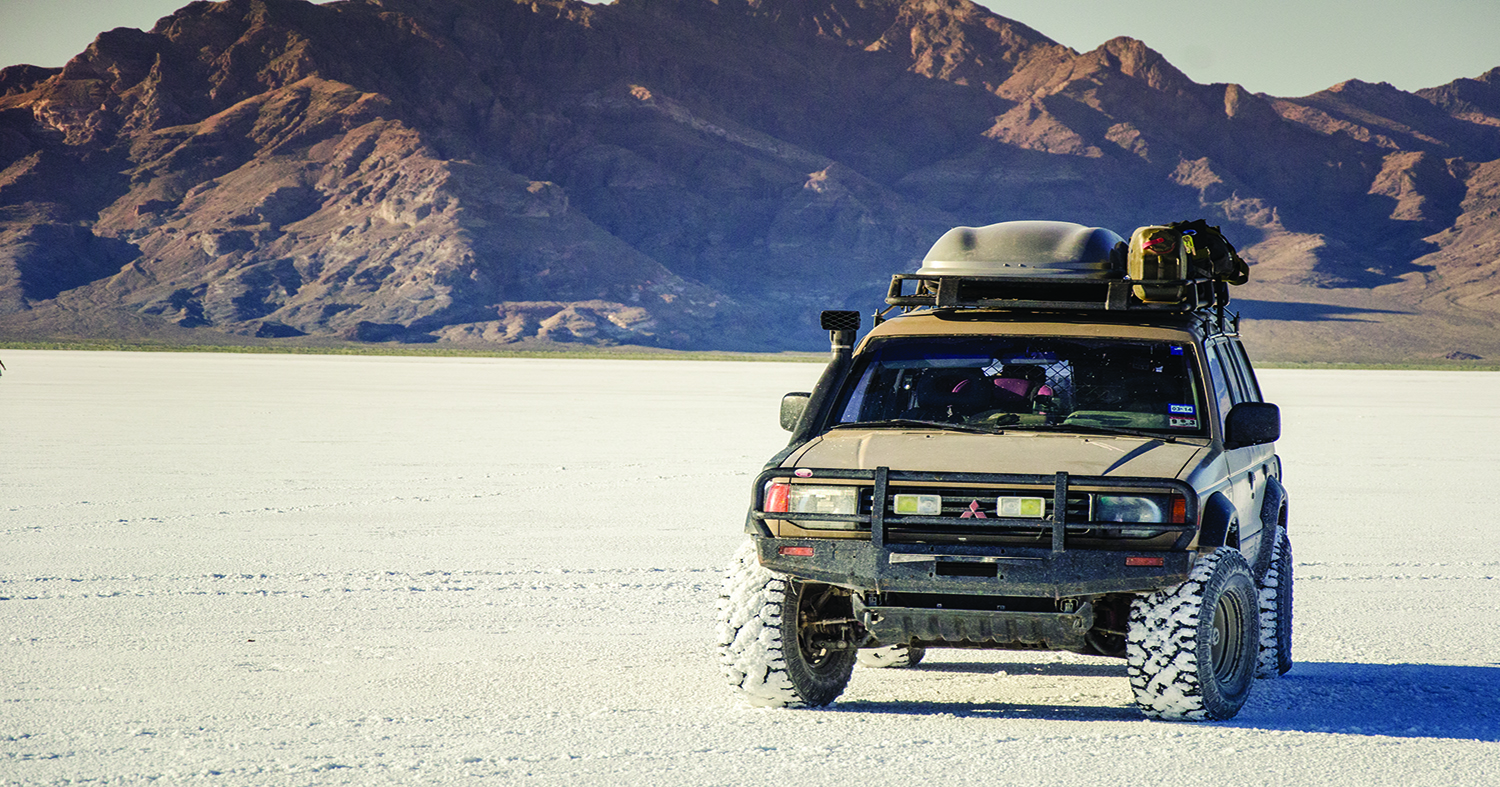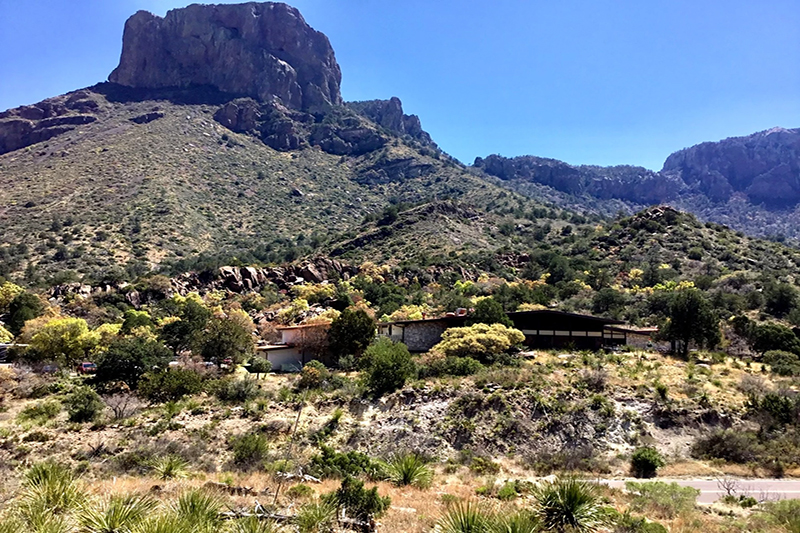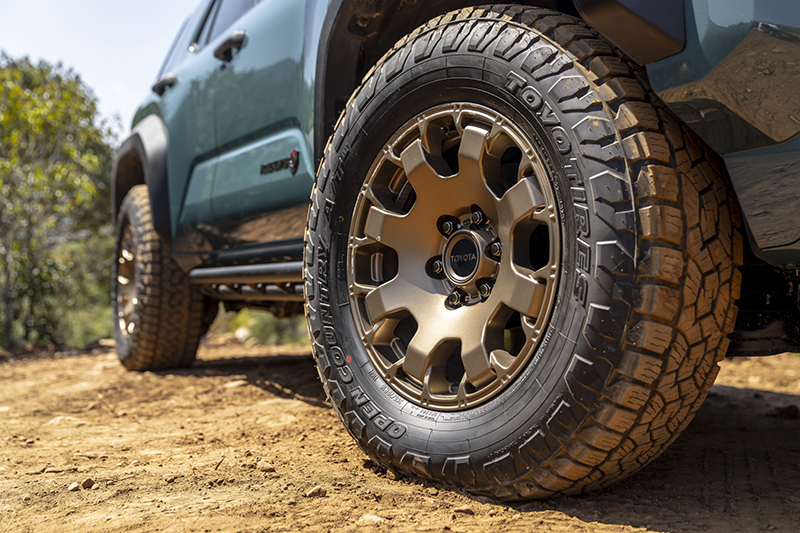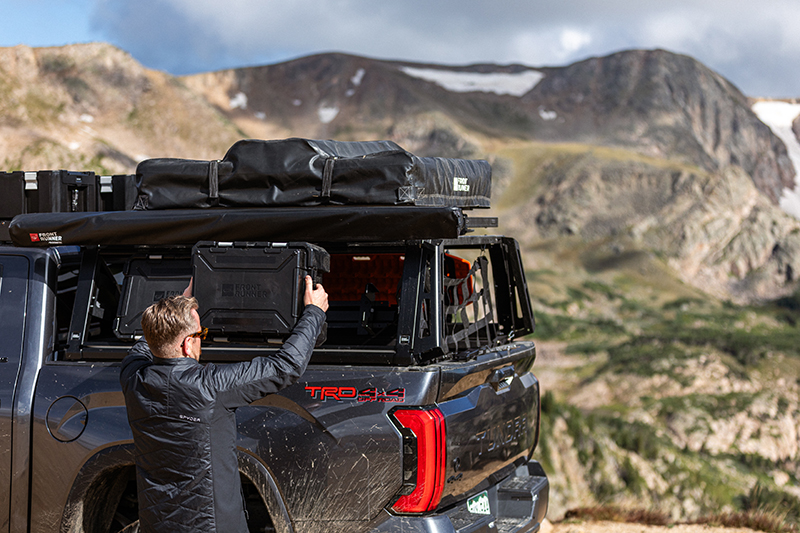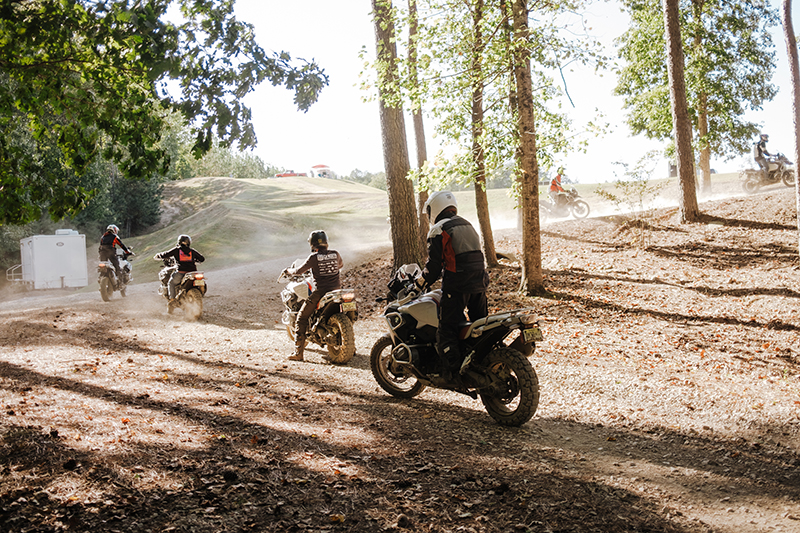A vehicle-based adventure through the Bonneville Salt Flats of Utah
I let out a short chuckle that day as I halted our truck in a cloud of dust. My astute young daughter asked why I had laughed. Knowing any attempt to explain my melodrama would prove feeble, I simply responded with another short grunt and a grin. We had just completed the off-highway portion of our anti clockwise circumnavigation of the Great Salt Lake, ending at the Bonneville Salt Flats in Wendover, Utah. My humor was founded in the realization that the choice of words describing this location, and unofficial destination, had come from a highly unimaginative lot. This was a flat and salty place, indeed…
Inconsequentially, we had driven to Logan, Utah from the Dallas area for my wife to attend a week-long business meeting. My two daughters and I passed the first day wandering around Logan, including a low range drive up to Logan Peak followed by a somewhat unnerving descent of Providence Canyon. While in Logan, we stopped at the Visitors Center to obtain local and state maps and literature and to pick the minds of the travel counselors. With maps in hand, we sought refuge from the August sun to begin planning the week’s adventures on the cool shaded lawn of Logan’s Mormon Tabernacle. There, lying prone in the grass peering over the maps, we formulated the idea to drive around the Great Salt Lake and visiting the salt flats and other interesting sights along the way.
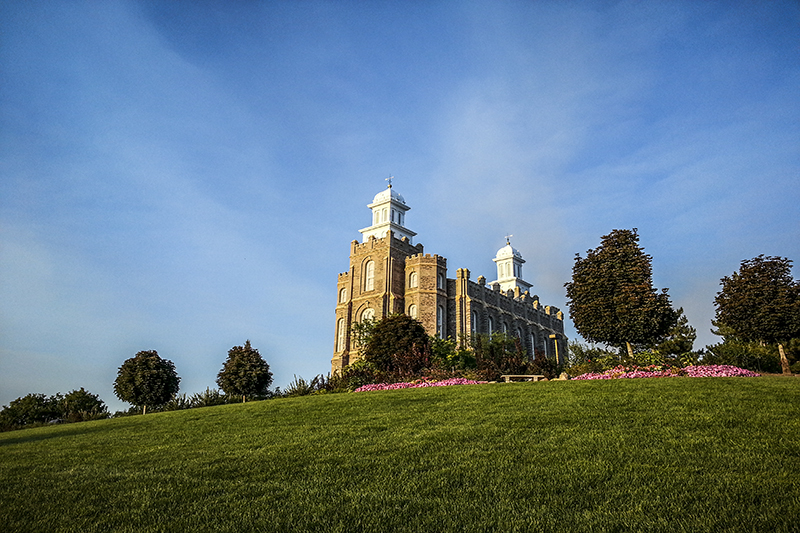
Planning our adventure on the lawn of Logan’s Mormon Temple.
Golden Spike State Historic Site
According to the map the points of interest en route were the Golden Spike State Historic Site, vehicle-traversable Transcontinental Railroad grades, and the mentioning of ghost towns sold me on the plan. Having consulted the map, only to notice many miles were to be covered with a lot of remote driving, I thought it would behoove me to go back and quiz the folks at the Visitors Center. I found out that neither they nor most of my Utah friends had ever actually visited the Bonneville Salt Flats much less the remote northwestern area of the Bonneville Lake Basin. Taking more to deter me than lack of knowledge, and after reviewing the idea with my eldest daughter, we decided to just wing it, leaving the details for the over-planners.
Early on Wednesday the girls and I set out from Logan. Our first via point was the Golden Spike National Historic site located at Promontory Summit, due north of the Great Salt Lake. We have a few rules that we follow when traveling, the first of which is when in doubt, fuel up. I made sure to take advantage of the last available petrol station in Tremonton, UT. We followed the Golden Spike signs through the circular wheat fields, which surely must look like giant “crop circles” from space, and quickly found ourselves out of the truck and learning about the “Last Cut” of the Transcontinental Railroad. The last time I had learned anything about the Transcontinental Railroad was when Will Smith’s movie “Wild Wild West” showed in theaters. Hardly an accurate depiction. I had always thought the railroad would have chosen a more level plane across the country; however, standing in front of the Last Cut, on a high ridge overlooking the valley we had just ascended from, I gained an appreciation of the extraordinary accomplishment achieved here. The railroad’s standards required the construction to have no more than a 2% grade at any time. That’s a rise of 106 ft (or less) per mile.
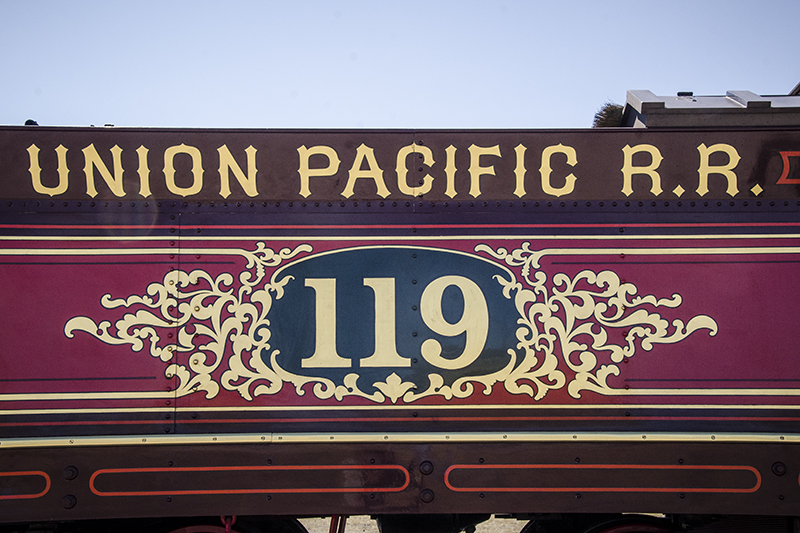
Union Pacific 119 Coal Car
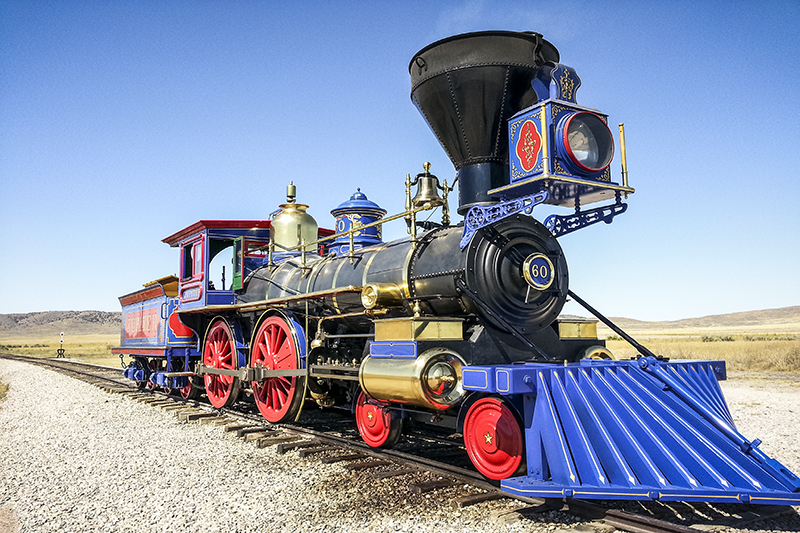
Locomotive Juptiter
While the last cut was interesting, I was slightly confused as the GPS directed me to this point with no trains or Visitors Center in sight. Another easy rule, when in doubt, is to stop and ask directions. Male stereotypes aside, when traveling in remote or out of the way places, we’ve found the exercise to always be rewarding. We back tracked a little to two government plated pickup trucks full of equipment. Looking up on the hill, I spotted a small group of workers with backpack sprayers who were slowly hiking back to the vehicles. We waited for them to arrive and we briefly chatted. They had been spraying invasive plant species in the region. As is always the case when I’m on a journey, I sought to gain local knowledge of places to see. They redirected me to the historic site and suggested to make the drive out to the Spiral Jetty, a place I had never heard of nor would have known to visit otherwise.
Arriving to the Golden Spike National Historic Site, we paid our admission fee, listened to the park ranger’s talk, toured the museum, and much to the children’s delight (Ok, I’m a big kid too!) we got up close and personal with the locomotives. What I had not learned in that comedic movie with a giant mechanical spider was that the Civil War paved the way for Congress to pass the Pacific Railroad Act of 1862. This was the opportunity needed to build a cross country railroad, known as the Pacific Railroad, spanning mountains and prairies from Omaha, Nebraska to Sacramento, California; some 1900 miles apart. The rail line stretching across Utah was built primarily by young Mormon men as well as Chinese and Irish immigrants.
At the historic site are replicas of two locomotive engines: the Union Pacific Jupiter and the Central Pacific 119. Both are run on a daily basis and made stationary in precisely the same place as the famous photograph taken the day the golden, and last, spike was driven into the highly polished Laurel wood cross tie some 145 years ago. Satisfied with the locomotive visit, we accepted the young workers’ advice to visit the Spiral Jetty. We set off, having picked up a new and more detailed map, not to mention more knowledge of the area. The drive from the Golden Spike Visitor Center to the Spiral Jetty is an easy sixteen miles of mostly fast, graded dirt roads through a high desert valley. The road, which leads to the Great Salt Lake’s northern shore, makes an abrupt turn after rounding and cresting a large hill composed mostly of black basalt rock. This course change gives a sudden sweeping view of the massive expanse of the lake. The au courant perspective allowed the first glimpse of three tiny characters whom would soon become our companions for the remainder of the day. These guys weren’t abnormally small. They were bigger than me I’d say! However, those little ants were on the large man-made peninsula jutting some 600 yards into the red saline lake.
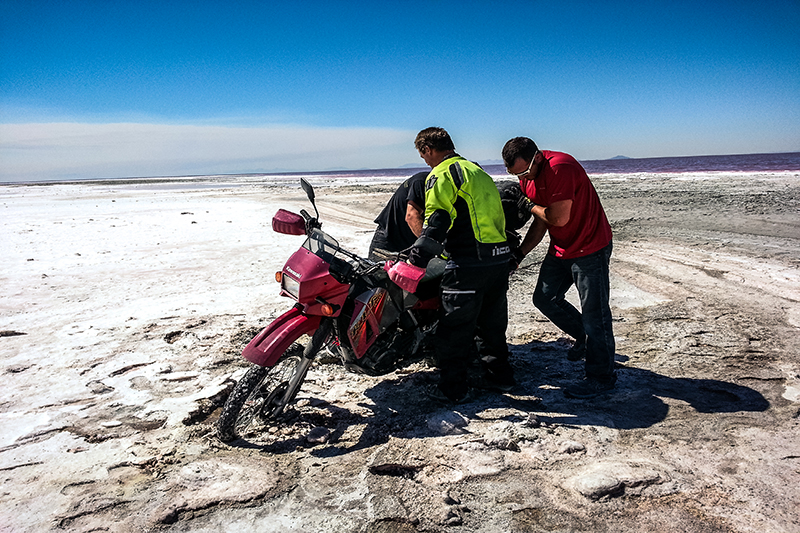
Stuck KLR 650
At the end of a six hundred yard jostle, comprised primarily of basketball-sized basalt rocks, was a stuck Kawasaki KLR650 dual-sport motorcycle. The rider, who was trying to avoid the bone jarring “road,” opted for the Russian roulette style ride across the mud pan…. with a crust of questionable thickness. Thankfully, his luck only ended in his bike becoming entrapped in a smelly, salty quagmire. Any effort to throttle out only resulted in sinking deeper and increasing the amount of sticky mud jamming itself between the tire and fender. I will admit my reluctance to drive out onto the jetty, but I felt it was necessary to assist the fellow adventurers and all it took was one extra set of hands to lift and push the bike to freedom.
Back on solid ground we gave each other high fives and made introductions. They were shocked to hear we had driven from Texas, and even more surprised to see that I had my kids out there too. When they heard our plans of driving around the lake, I was relieved to hear they had similar plans and I gladly accepted their invitation to tag along… “If I could keep up,” they said.
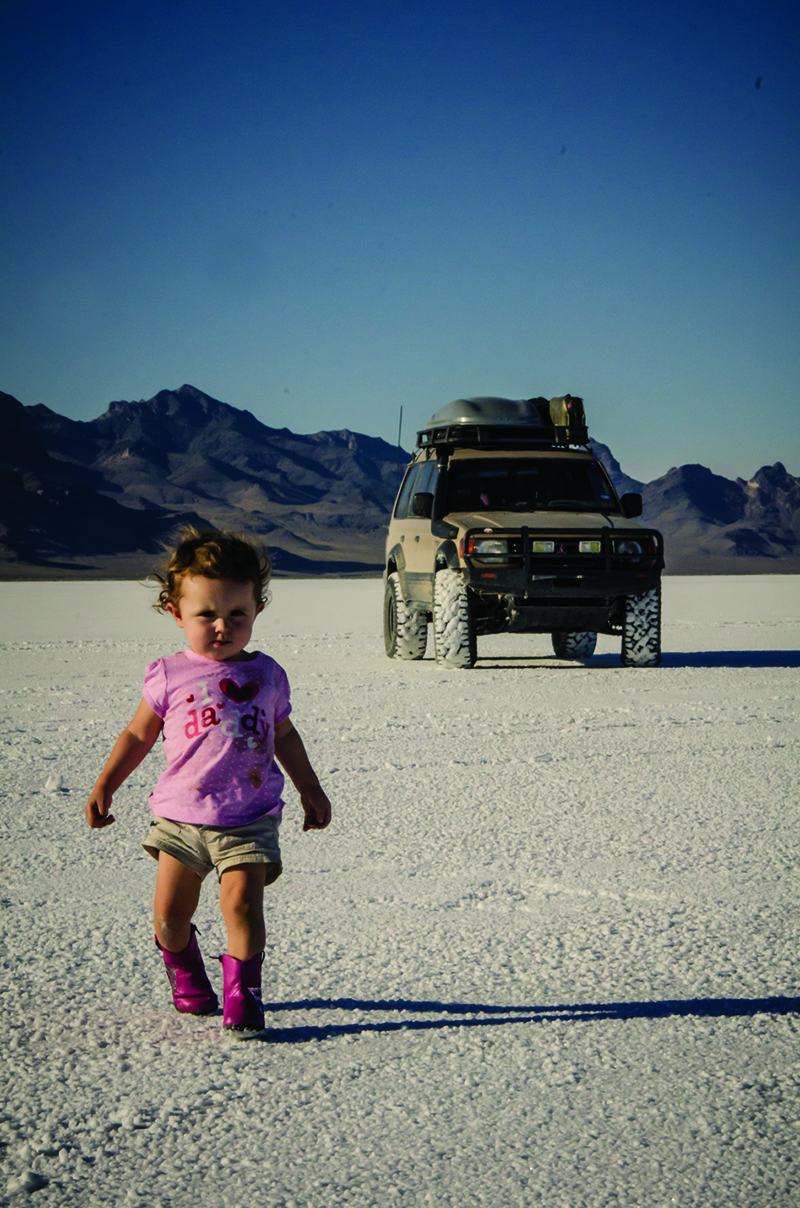
Charlotte strutting her stuff in front of the Montero. Bonneville Salt Flats
Mitsubishi Montero
I grinned and said I’d keep pace with them. One of the primary reasons for choosing my 1995 Mitsubishi Montero SR is its racing pedigree. The Montero (also known as the Pajero internationally) is the winningest model vehicle of the infamous Dakar Rally, twelve titles in fact. With the upper level trim package, the truck includes a very posh but utilitarian interior, an aggressively tuned v6, and a factory rear differential locker. It was top of the line in 1995. True to my word I chased their dust keeping up all day, even with the comfort of air conditioning.
After leaving the jetty we began following Old Railroad Grade Road. All the while, keeping in mind the park ranger’s warning of loose railroad spikes puncturing tires. The ranger pointed out that had the road been recently motor-graded, he’d discourage traveling the route. Thankfully no work had been done, but the half dozen spikes I spotted along the way kept my eyes on the rubber.
Driving the straight and narrow road across blinding white salt pans, the scenery was certainly new to me and very compelling. I was very excited to see the ghost towns en route; unfortunately, this is the sort of time where not planning and researching can lead to disappointments. Nothing was left of the ghost towns. Most were abandoned close to a century ago, and little survived the decades of weather, vandalism, and demolition. The only physical reminders of these places were nothing more than small concrete geographical markers in the desert. Feeling disappointed, my motorcycle companions, daughters, and I moved on.
By this point we were all reaching our half tank marks. Looking at the map, we thought it may be wise to get out of the dirt and check the closest town on the map, Park Valley on hwy 30. With no gas, and not even a soda machine in the quaint ranch town, we pulled out the maps again. My motorcycle companions at this point flipped a coin to decide where they would go next. We split from the comfort of our safety in numbers as they headed north into Idaho to the Castle Rocks State Park, and us south to the Bonneville Salt Flats.
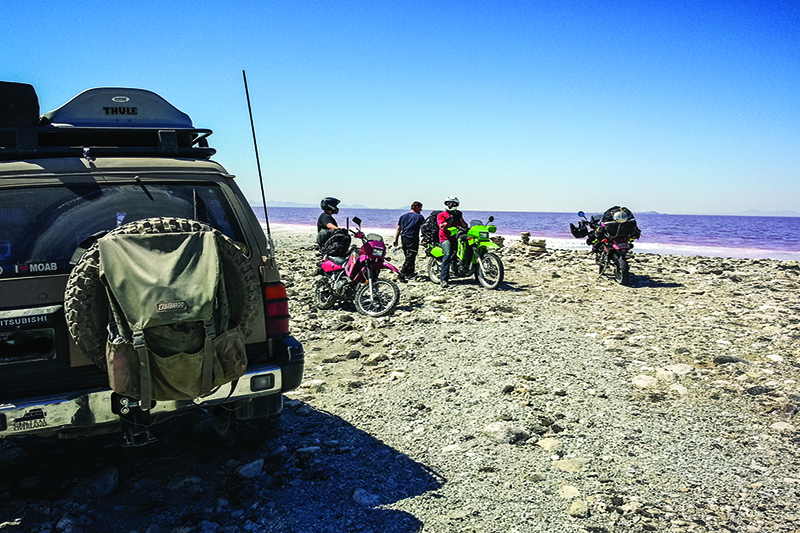
Teamwork was needed to recover the stuck motorcycle.
On the map, following closely to the Old Railroad Grade Road, is the Immigrant Trail Road. Connecting to this from Spring Valley, we continued to the first interesting structure we had come across thus far, the remains of Rabbit Springs. The spring was comprised mostly of railroad ties and built in the shape of a funnel. Surveying the site from atop the mounded dirt excavation, I could only imagine the need for this man-made oasis. This area is extremely remote and equally dry. Later, research revealed that an estimated 40,000 head of sheep and over 500 head of cattle used the spring.
Moving south we passed through another empty name on the map: Lucin. Here we met the only other vehicle we were to see in the dirt all day, an older gentleman riding his ATV on the railroad grade. We chatted for a while and he filled me in on the character of these old ghost towns, explaining that they were built primarily by the Mormon families of railroad workers. Since few trees grew in the area, the buildings were constructed from discarded railroad ties that were unsuitable for building the tracks, cracks filled with mud, and thatched grass roofs were the norm. These were rough folks who lived in poverty.
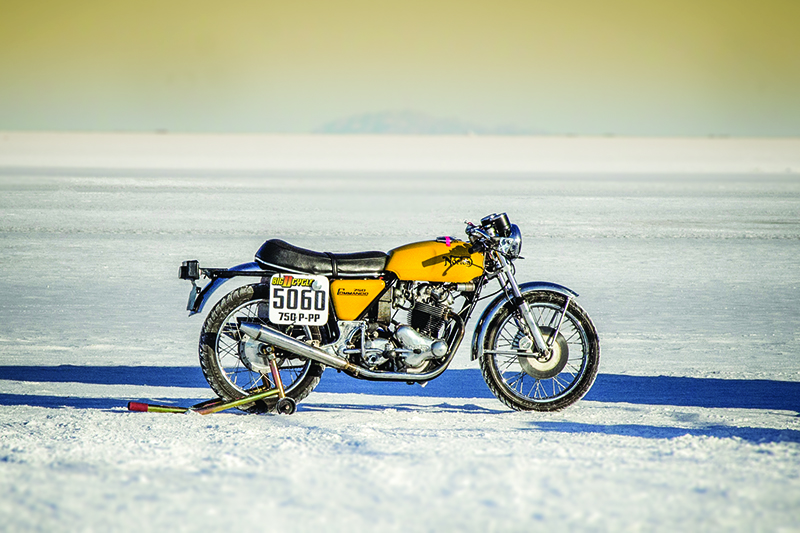
18 A beautiful Norton Commando 750 that was run for time on the salt flats.
The gentleman also mentioned that he had now repaired three flat tires on his ATV and was out of plugs. I offered some from our kit, but seeing as I had the kids in the truck, he declined saying that I needed to keep them just in case. He said if he has more flats he’ll just keep riding on, accepting the damage that might occur. He did accept a cold soda from my fridge/freezer though.
Waving goodbye to another adventurous soul, we were guided by the same navigational landmark the immigrants used: Pilot Peak. We skirted between the impassable Newfoundland Mountain ridge and the chancy white expanse of the dry bed of Lake Bonneville when unexpectedly, we crossed briefly into Nevada. Instead of a nice metal sign with a gold miner greeting us to the new state, we traversed a wide cattle guard placed deliberately between two stretches of unmaintained barbwire fence. Soon, we’d round the mountain and get the full glimpse of the Bonneville Salt Flats.
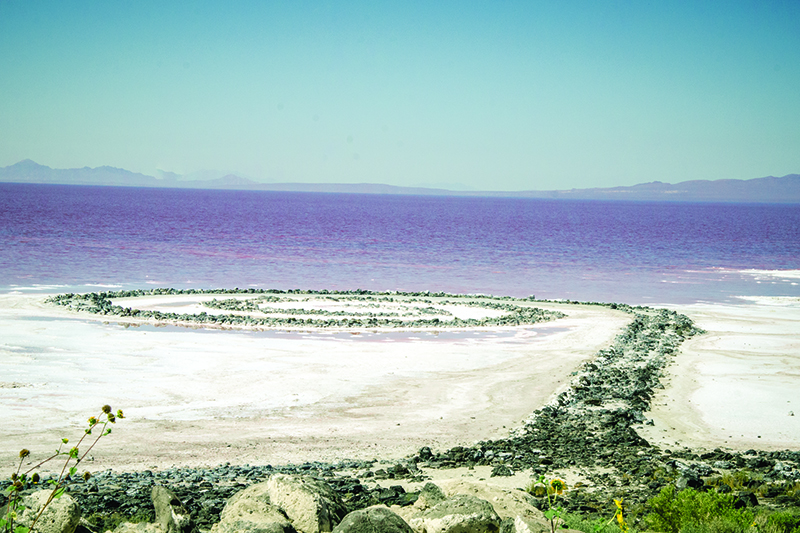
The Spiral Jetty, created by the eccentric artist gentlemen, Robert Smithson in 1970
As it turns out, my lack of planning provided an exciting surprise. It was Speed Week on the Bonneville Salt Flats. Men and women with various sized egos and pocket books compete with themselves and others to break records and to just plain go fast. The bivouac areas of the tracks were full of interesting two and four-wheeled vehicles but being as we were late to the party, most folks were packing up and heading home and none of the vehicles were running the course, another failure. But, making lemonade out of lemons, I still enjoyed the opportunity to photograph my kids and my own truck on the flats. A huge expanse of flat, salty earth. An unimaginative lot they were indeed.
OutdoorX4 Magazine – Promoting responsible vehicle-based adventure travel and outdoors adventure


